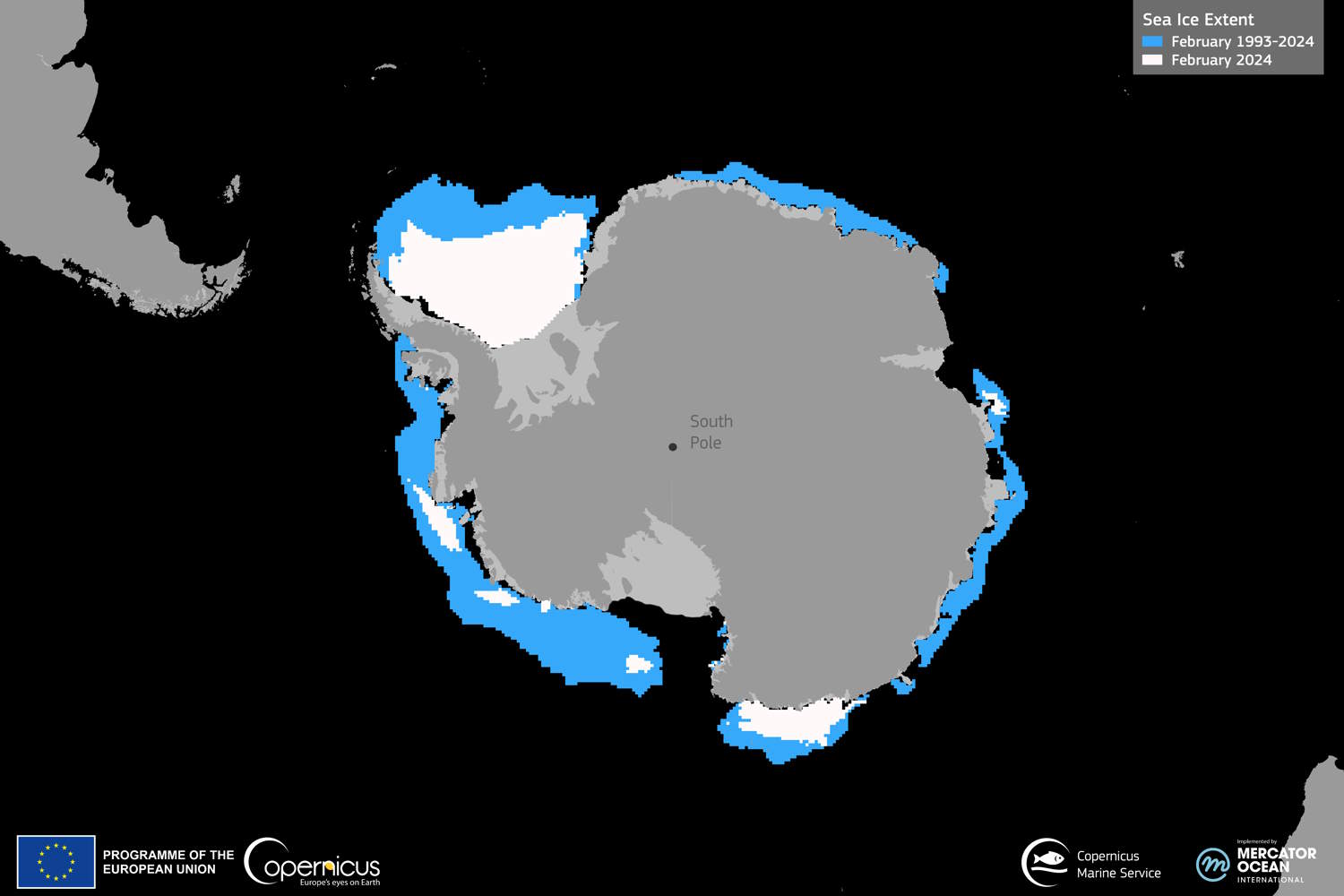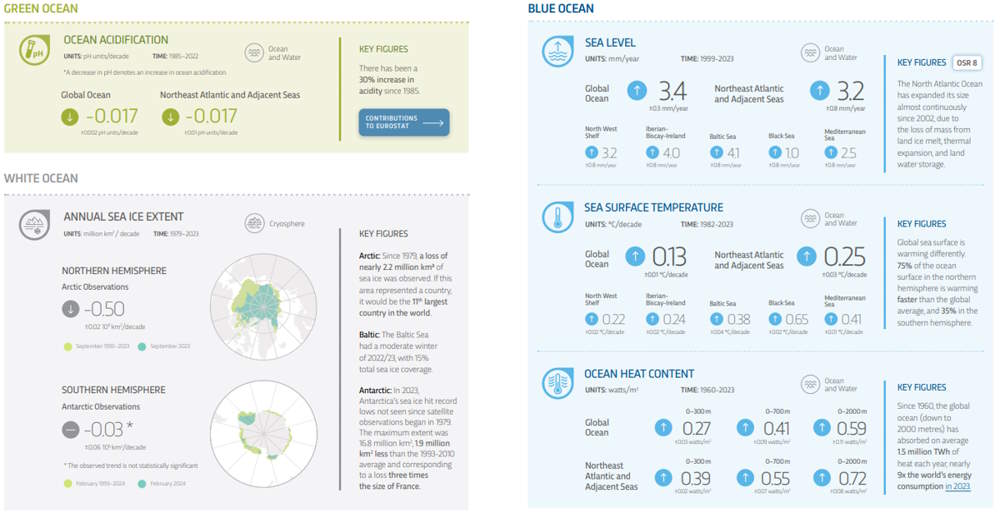On 30 September, the Copernicus Marine Service (CMEMS) published the eighth Copernicus report on the state of the EU's oceans (OSR 8), an annual publication that provides information on current conditions and changes in global water bodies: the This year's report reveals an ocean facing record-breaking extreme events

@Copernicus
Marine heat waves are increasingly frequent and intense, and extreme phytoplankton blooms are on the rise. The ocean is warming up and is reaching a very dangerous level. All these contribute to an unprecedented loss of about 847,000 square miles, 2.2 million km², of Arctic sea ice in recent decades-enough to rank as the 11th biggest country in the world.
This is one of the headlines from the 8th Copernicus Ocean State Report, OSR 8-a yearly report that, on a global scale, keeps scientists, policy makers, and members of the blue business community informed along with the general public on issues of ocean climate and health.
The report
While becoming more frequent, marine heatwaves were also becoming more intense, with a number of record-breaking events in European waters: sea temperature reached a 40-year high around the Balearic Islands; the Iberian-Biscay-Irish area had been subject to marine heatwaves for an average duration of 145 days. Meanwhile, off Crete, an unusual cold anomaly initiated an extreme phytoplankton bloom.
The ocean continues to store more heat as the planet heats up. In fact, the rate of ocean warming has doubled over the past two decades, from affecting everything between biodiversity to basic oceanographic processes, right to global climate. Also, in February 2023, Antarctic sea ice reached a record low, coming in with a maximum area of 732,000 square miles-1.9 million km²-less than the average over the past decades, three times the size of France.
It highlights that:
- In 2023, 22 percent of the open-ocean surface had been subject to at least one severe or extreme marine heatwave.
- In comparison with 2005, the rate of ocean warming has nearly doubled. Global ocean warming started accelerating around 1960, but the rate jumped from 0.58 watts per square meter to 1.05 W/m² over the past two decades.

@Copernicus
- A new approach for the quantification of Earth’s energy balance yields a significant positive trend of 0.75 W/m² from 1993 to 2022, which supports increased ocean warming.
- In 2023, polar sea ice levels were recorded at an all-time low. Because of the rising surface water temperatures, the Arctic has lost 4% of its sea ice each decade between 1979 and 2023. Antarctic sea ice in 2023 dropped to its lowest extent on record since satellites began carrying cameras to track it in 1993-3 times the size of France, down 732,000 square miles from the 1993-2010 average.
- In 2022, nearly two-thirds of the Baltic Sea experienced marine heatwaves. The frequency is on the increase: Temperatures rose in the Gulf of Bothnia up to 49°F over the norm.
- In the last few years, the height of the highest 5% of ocean waves has substantially risen globally. In 2022, record waves hit the port of Melilla, Spain, in a storm that showed very strong winds and a razor-sharp sea-level pressure gradient. It generated waves as high as 24 feet or 7.3 meters high and with periods greater than nine seconds.
